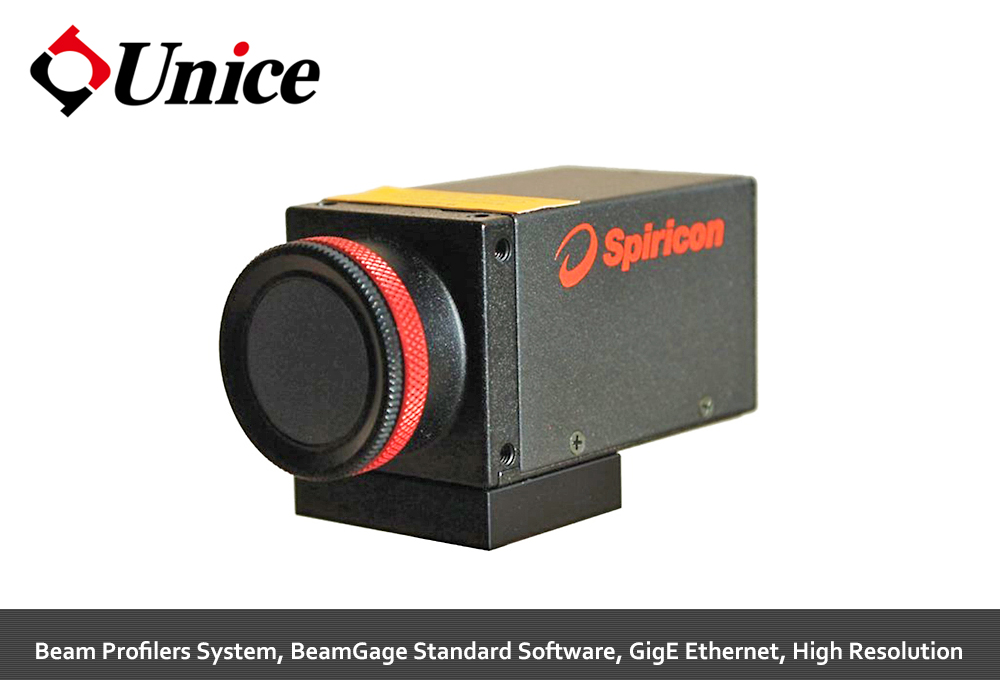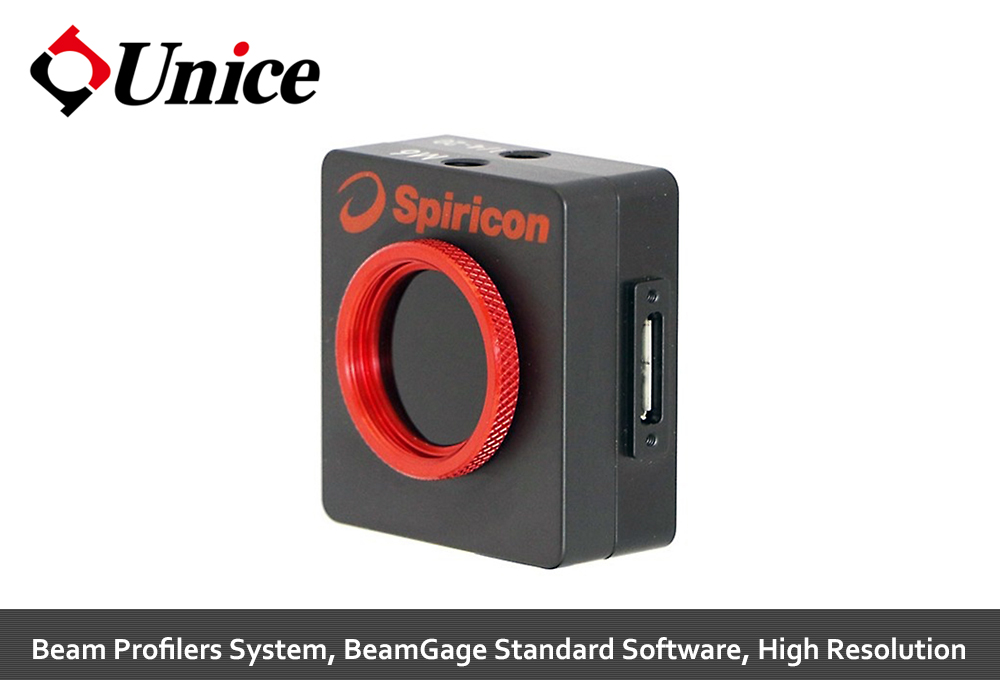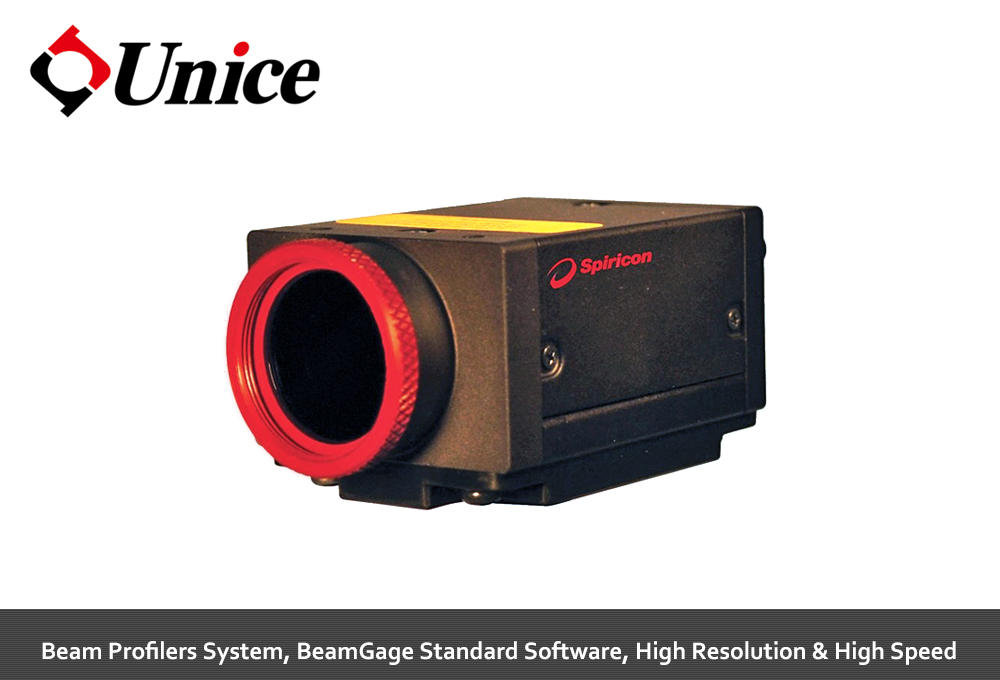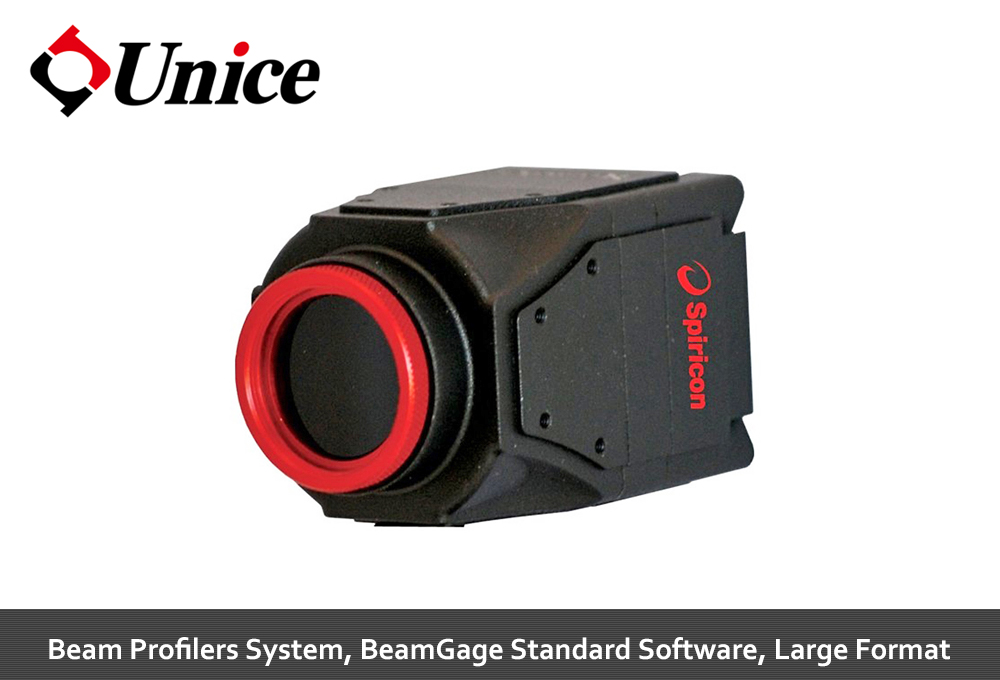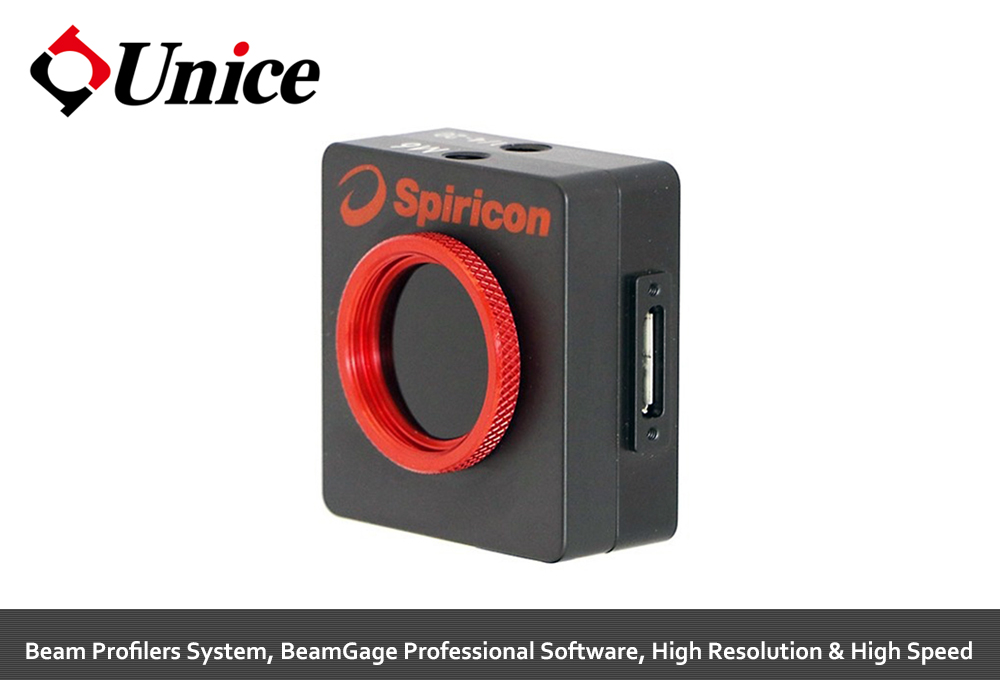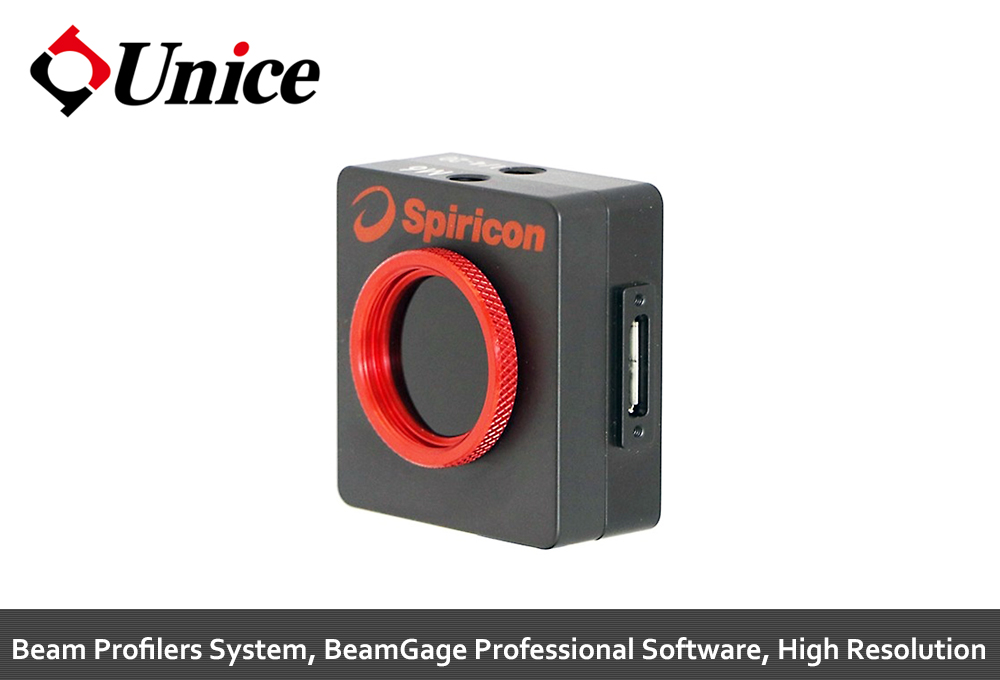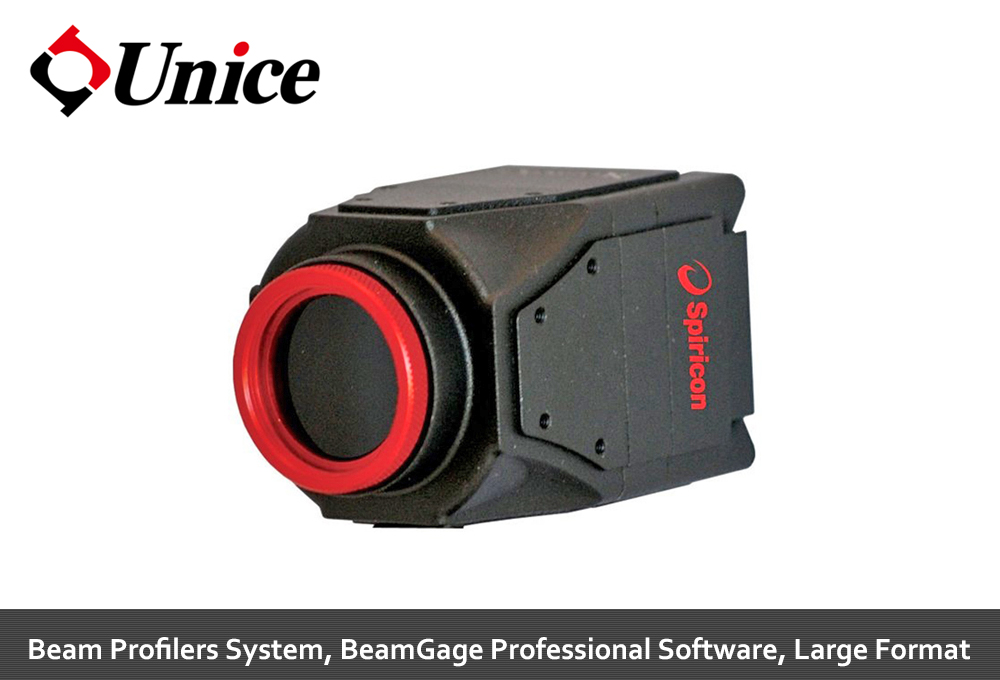| Model |
GeviCam |
| Wavelength |
190 - 1100nm |
| Active Area |
5.44mm x 7.16mm |
| Beam Sizes |
44μm - 5.2mm |
| Elements |
1600 x 1200 |
| Effective Pixel Pitch |
4.4µm |
| Dynamic Range |
57dB |
| Frame Rate at Full Resolution |
17 fps |
| Compatible Light Sources |
CW, Pulsed |
| Sensor Type |
Silicon CCD |
| Interface |
GigE Ethernet |
|

Data Sheet
|

Software Comparsion Chart
|
Software - BeamGage®-Standard Version
• Extensive set of ISO quantitative measurements
• Patented Ultracal™ algorithm for highest accuracy measurements in the industry
• Customizable user interface for ‘ease of use’
• Auto-setup and Auto-exposure capabilities for fast set-up and optimized accuracy
• Statistical analysis on all calculated results displayed in real time
• New BeamMaker® beam simulator for algorithm self-validation
The performance of today’s laser systems can strongly affect the success of demanding, modern laser applications.
The beam's size, shape, uniformity or approximation to the expected power distribution, as well as its divergence and mode content can make or break an application. Accurate knowledge of these parameters is essential to the success of any laser-based endeavor. As laser applications push the boundaries of laser performance it is becoming more critical to understand the operating criteria.
BeamGage includes all of the accuracy and ISO approved quantitative results that made our LBA software so successful. BeamGage also brings the ease-of-use that has made our BeamStar software so popular. Our patented UltraCal algorithm, guarantees the data baseline or “zero-reference point” is accurate to 1/10 of a digital count on a pixel-by-pixel basis. ISO 11146 requires that a baseline correction algorithm be used to improve the accuracy of beam width measurements. UltraCal has been enhanced in BeamGage to assure that accurate spatial measurements are now more quickly available.
See Your Beam As Never Before:
The Graphical User Interface (GUI) of BeamGage is new. Dockable and floatable windows plus concealable ribbon tool bars empowers the BeamGage user to make the most of a small laptop display or a large, multi-monitor desktop PC.



Measure Your Beam As Never Before:
Ultracal: Essential, or no big deal?
If you want accurate beam measurements, you want Ultracal.
What is Ultracal?
Our patented, baseline correction algorithm helped establish the ISO 11146-3 standard for beam measurement accuracy. The problems with cameras used in beam profile measurements are: a) The baseline, or zero, of the cameras will drift with time and temperature changes, and b) include random noise. Ultracal is the only beam profiler algorithm that sets the baseline to “zero”, and, in the center of the noise. (Competitive products use other less sophisticated algorithms that perform a baseline subtraction, but truncate the noise below the “zero” of the baseline. This leaves only a “positive” component, which adds a net value to all beam measurements).
Try the following on any other beam profiler product to see the inherent error if you don’t use Ultracal.
1. Measure a beam with full intensity on the profiler camera.
2. Insert a ND2 filter (100X attenuation) into the beam and measure it again.
3. Compare the results.
4. The Standard Deviation below is about 3%, which is phenomenal compared to the 100% or more of any beam profiler without Ultracal. Adding the use of Automatic Aperture improves the accuracy to 1%. (The conditions of this measurement is a camera with a 50dB SNR).
5. You normally don’t make measurements at such a low intensity. But occasionally you may have a drop in intensity of your beam and don’t want to have to adjust the attenuation. Or, you may occasionally have a very small beam of only a few tens of pixels. In both of these cases, Ultracal becomes essential in obtaining accurate measurements.
Beam Measurements and Statistics
BeamGage allows you to configure as many measurements as needed to support your work, and comes standard with over 55 separate measurement choices. To distinguish between calculations that are based on ISO standards and those that are not, a graphical ISO logo is displayed next to appropriate measurements. You can also choose to perform statistical calculations on any parameter in the list.

Multiple Charting Options
You can create strip charts for stability observations on practically any of the calculations options available. Charts enable tracking of short or long term stability of your laser.

Beam Pointing Stability
Open the Pointing Stability Window to collect centroid and peak data from the core system and display it graphically.
View a chart recorder and statistical functions in one interface:

Easy to Use and Powerful
BeamGage is the only beam profiler on the market using modern Windows 7 navigation tools. The menu system of BeamGage is easy to learn and easy to use with most controls only one mouse click away. Some ribbon toolbar examples:

BeamGage Main Display Screen

Pass / Fail with Password Protection for Production Testing
BeamGage allows the user to configure the displayed calculations; set-up the screen layout and password protect the configuration from any changes. This permits secure product testing as well as data collection for Statistical Process Control (SPC), all while assuring the validity of the data.

Unique Features of BeamGage - Standard
Power/Energy Calibration
Using the USB output from select Ophir power/energy meters, the BeamGage application will display measured power/energy values from the full range of Ophir thermopile, photodiode and pyroelectric sensors. Pulsed lasers can be synced up to 100Hz, or the frame rate of the triggered camera, whichever is less. This is the first time in the industry a laser power meter has been married to a laser beam profile system.

BeamMaker®; Numerical Beam Profile Generator
BeamGage contains a utility, BeamMaker, that can synthetically generate beam profile data by modeling either Laguerre, Hermite or donut laser beams in various modal configurations. BeamMaker permits the user to model a beam profile by specifying the mode, size, width, height, intensity, angle, and noise content. Once generated the user can then compare the theoretically derived measurements to measurements including experimental inaccuracies produced by the various measurement instruments and environmental test conditions. Users can now analyze expected results and confirm if measurement algorithms will accurately measure the beam even before the experiment is constructed. BeamMaker can help laser engineers, technicians and researchers understand a beam’s modal content by calculating results on modeled beams for a better understanding of real laser beam profiles. BeamMaker is to laser beam analysis as a function generator is to an oscilloscope.

Integrated automatic Help linked into the Users Guide
Touch sensitive Tool tips are available on most all controls, and "What’s This" help can provide additional details. Confused about what something is or forgot how it works, just go to the top right corner and touch the "What’s This" help icon, then click on the control or menu item that you want more info about and you are taken to the explanation within the BeamGage Users Guide.
Multilingual
BeamGage comes with both Japanese and Chinese user interface. Country specific manuals can be downloaded from the
ophiropt.com/photonics web site.
